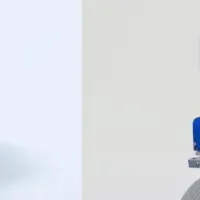
Hollow Fiber Ultrafiltration Market Set to Surge to $4.85 Billion by 2030
Hollow Fiber Ultrafiltration Market Explosion: A $4.85 Billion Projection
As the global strive for clean and safe drinking water intensifies, the hollow fiber ultrafiltration market is poised for remarkable growth. According to a recent report by MarketsandMarkets, the market is expected to escalate from $2.39 billion in 2025 to $4.85 billion by 2030, marking a compound annual growth rate (CAGR) of 15.2% during the forecast period. This surge highlights the increasing demand for effective water treatment solutions in various sectors, driven by regulatory compliance and environmental sustainability.
Key Factors Propelling Market Growth
The expansion of the hollow fiber ultrafiltration market can be attributed to several factors, notably:
- - Chemical Stability and High Efficiency: Hollow fiber ultrafiltration systems are known for their ability to efficiently remove bacteria, viruses, and suspended solids. This efficiency enables industries and municipalities to comply with stringent water safety regulations without resorting to chemical treatments.
- - Growing Water Scarcity Concerns: The rising global population and urbanization have exacerbated water scarcity issues, prompting the need for reliable and efficient water treatment solutions. Hollow fiber ultrafiltration fulfills this demand by offering an effective means of turning wastewater into reusable resources.
- - Biotechnology and Pharmaceutical Uptake: The biotechnology, food and beverage, and pharmaceutical industries are increasingly reliant on sterile filtration methods. The adoption of hollow fiber ultrafiltration is essential in these sectors due to its efficiency in ensuring the purity and safety of products.
Municipal Applications on the Rise
Municipal applications are expected to constitute a significant portion of the hollow fiber ultrafiltration market. With the technology being utilized for desalination, wastewater treatment, and public utility water treatment, its role is becoming crucial in providing safe drinking water. Such applications benefit greatly from the hollow fiber configuration, which has a high surface area-to-volume ratio, enabling compact and efficient filtration. As municipalities aim to modernize their water treatment facilities and address aging infrastructure issues, the demand for hollow fiber ultrafiltration solutions is expected to grow significantly.
The ability of these systems to effectively eliminate pathogens and contaminants allows them to meet modern regulatory standards, making them a preferred choice for city planners. Additionally, government incentives aimed at renovating public water systems will stimulate further growth in this segment.
The Rise of Ceramic Membranes
As the technology evolves, ceramic hollow fiber membranes are anticipated to become the second-largest segment in the market. Built from durable inorganic materials, ceramic membranes boast superior mechanical strength and chemical resistance compared to traditional polymer membranes. This durability makes them ideal for challenging operational environments, such as those found in wastewater treatment and industrial applications. Although their initial cost can be higher, the longevity and efficiency of ceramic membranes lead to long-term cost savings, thereby enhancing their market appeal.
European Market: A Fast-Growing Region
Europe is emerging as a vital region for the hollow fiber ultrafiltration market, driven by strict environmental regulations and a push towards sustainable water management solutions. Countries like Germany, France, and the UK are investing heavily in updating water infrastructure to enhance recycling and reuse capabilities, which is further fueling demand for cutting-edge purification technologies like hollow fiber ultrafiltration. The EU's emphasis on reducing chemical use in water treatment processes presents an opportunity for companies specializing in these innovative filtration systems.
Key Players in the Field
Several key players are dominating the hollow fiber ultrafiltration market, including:
- - Toray Industries, Inc. (Japan)
- - DuPont (US)
- - Veolia (France)
- - Pall Corporation (US)
- - Hydranautics (US)
These companies are continually investing in research and development to innovate and expand their product offerings in the filtration technology space.
Conclusion
The hollow fiber ultrafiltration market is set for remarkable growth as the world grapples with water scarcity and seeks efficient water treatment solutions. With increasing urban populations, regulatory pressures, and new technologies driving demand, the market's trajectory suggests a compelling future for this vital sector in ensuring safe and clean water for all. As we approach 2030, stakeholders in this market can look forward to significant opportunities for growth and development.
Topics Consumer Technology)










【About Using Articles】
You can freely use the title and article content by linking to the page where the article is posted.
※ Images cannot be used.
【About Links】
Links are free to use.